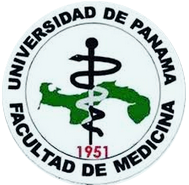Evaluación y tratamiento del trastorno motor en niños con parálisis cerebral: perspectiva neuroquirúrgica
[Evaluation and treatment of motor disorder in children with cerebral palsy: neurosurgical perspective]Stephany Morales V1

1. Profesional Independiente.
Descargas
Archivos adicionales
Resumen
La parálisis cerebral (CP, por sus siglas en inglés) es un trastorno crónico resultado del desarrollo anormal del cerebro que causa una variedad de trastornos permanentes del movimiento y del tono postural. Los síntomas pueden variar según el tipo de trastornos motores que se presenten y, a menudo, resultan en limitaciones en la actividad y dependencia total de los cuidadores. Aunque la CP se diagnostica clínicamente, la tecnología permite dividir los resultados de la resonancia magnética en niños con CP en cinco grupos según el sistema de clasificaciónn de imágenes por resonancia magnética para una mejor comprensión de la afección cerebral. El tratamiento es altamente complejo y requiere un manejo multidisciplinario para asegurar la mejor calidad de vida posible. Las técnicas neuroquirúrgicas pueden ser parte del plan de tratamiento para mejorar la calidad de vida del niño y su familia.
Abstract
Cerebral palsy (CP) is a chronic disorder resulting from abnormal brain development that causes a variety of permanent movements and postural tone disorders. Symptoms can vary depending on the type of motor disorders present and often result in activity limitations and total dependence on caregivers. Although CP is diagnosed clinically, technology allows MRI findings in children with CP to be divided into five groups according to the magnetic resonance imaging classification system for a better understanding of the brain condition. Treatment is highly complex and requires multidisciplinary management to ensure the best possible quality of life. Neurosurgical techniques can be part of the treatment plan to improve the quality of life of the child and family.
Citas
[1] Vitrikas K, Dalton H, Grant D, Breish D. Cerebral Palsy: An Overview. 2020;101(4):213–20. Disponible en: https://www.aafp.org/dam/brand/aafp/pubs/afp/issues/2020/0215/p213.pdf
[2] Sadowska M, Sarecka-Hujar B, Kopyta I. Cerebral Palsy: Current Opinions on Definition, Epidemiology, Risk Factors, Classification and Treatment Options. Neuropsychiatric Disease and Treatment. 2020 Jun; Volume 16(16):1505–18. DOI: https://doi.org/10.2147/NDT.S235165
[3] Paul S, Nahar A, Bhagyawati M, Kunwar AJ. A Review on Recent Advances of Cerebral Palsy. Kumar G, editor. Oxidative Medicine and Cellular Longevity. 2022 Jul 30;2022(2622310):1–20. DOI: https://doi.org/10.1155/2022/2622310
[4] CDC. Data and Statistics for Cerebral Palsy [Internet]. Centers for Disease Control and Prevention. 2018. Disponible en: https://www.cdc.gov/ncbddd/cp/data.html
[5] DÍA MUNDIAL DE LA PARÁLISIS CEREBRAL | Asamblea Nacional de Panamáá [Internet]. www.asamblea.gob.pa. [citado 2023 May 12]. Disponible en: https://www.asamblea.gob.pa/index.php/noticias/dia-mundial-de-la-paralisis-cerebral
[6] Michael-Asalu A, Taylor G, Campbell H, Lelea LL, Kirby RS. Cerebral Palsy. Advances in Pediatrics. 2019 Aug;66(2019):189–208. DOI : https://doi.org/10.1016/j.yapd.2019.04.002
[7] Zimmerman K, Horeb V, De La Cruz J, et al. MRI classification system (MRICS) for children with cerebral palsy: development, reliability, and recommendations. Developmental Medicine & Child Neurology [Internet]. 2016 Jun 21;59(1):57–64. Disponible en: https://www.onlinelibrary.wiley.com/doi/full/10.1111/dmcn.13166. DOI : https://doi.org/10.1111/dmcn.13166
[8] M. Antczak J. Transcranial magnetic stimulation as a diagnostic and therapeutic tool in cerebral palsy. Postępy Psychiatric i Neurologic. 2021;30(3):203–12. DOI : https://doi.org/10.5114/ppn.2021.110796
[9] Bonouvrié LA, Becher JG, Vles JSH, Vermeulen RJ, Buizer AI. The Effect of Intrathecal Baclofen in Dyskinetic Cerebral Palsy: The IDYS Trial. Annals of Neurology [Internet]. 2019 May 21;86(1):79–90. Disponible en: https://www.ncbi.nlm.nih.gov/pmc/articles/PMC6617761/pdf/ANA-86-79.pdf. DOI : https://doi.org/10.1002/ana.25498
[10] Kudva A, Abraham ME, Gold J, et al. Intrathecal baclofen, selective dorsal rhizotomy, and extracorporeal shockwave therapy for the treatment of spasticity in cerebral palsy: a systematic review. Neurosurgical Review. 2021 Apr 19;44:3209–28. DOI: https://doi.org/10.1007/s10143-021-01550-0
[11] Fehlings D, Brown L, Harvey A, et al. Pharmacological and neurosurgical interventions for managing dystonia in cerebral palsy: a systematic review. Developmental Medicine & Child Neurology. 2018 Feb 6;60(4):356–66. DOI: https://doi.org/10.1111/dmcn.13652
[12] Madsen PJ, Isaac Chen HC, Lang SS. Neurosurgical Approaches. Physical Medicine and Rehabilitation Clinics of North America. 2018 Aug;29(3):553–65. DOI: https://doi.org/10.1016/j.pmr.2018.04.002
[13] Sanger TD. Deep brain stimulation for cerebral palsy: where are we now? Developmental Medicine & Child Neurology [Internet]. 2019 Jun 18;62(1):28–33. Disponible en: https://onlinelibrary.wiley.com/doi/abs/10.1111/dmcn.14295. DOI : https://doi.org/10.1111/dmcn.14295
[14] Nemanich ST, Chen CY, Chen M, et al. Safety and Feasibility of Transcranial Magnetic Stimulation as an Exploratory Assessment of Corticospinal Connectivity in Infants After Perinatal Brain Injury: An Observational Study. Physical therapy [Internet]. 2019 Jun 1;99(6):689–700. Disponible en: https://academic.oup.com/ptj/article/99/6/689/5365407?login=false. DOI : https://doi.org/10.1093/ptj/pzz028
[15] Zewdie E, Ciechanski P, Kuo HC. Safety and tolerability of transcranial magnetic and direct current stimulation in children: Prospective single center evidence from 3.5 million stimulations. Brain Stimulation [Internet]. 2020 May 1;13(3):565–75. Disponible en: https://www.sciencedirect.com/science/article/pii/S1935861X19304966?via%3Dihub. DOI : https://doi.org/10.1016/j.brs.2019.12.025
Licencia
Derechos de autor 2023 Infomedic Intl.Derechos autoriales y de reproducibilidad. La Revista Médica de Panama es un ente académico, sin fines de lucro, que forma parte de la Academia Panameña de Medicina y Cirugía. Sus publicaciones son de tipo acceso gratuito de su contenido para uso individual y académico, sin restricción. Los derechos autoriales de cada artículo son retenidos por sus autores. Al Publicar en la Revista, el autor otorga Licencia permanente, exclusiva, e irrevocable a la Sociedad para la edición del manuscrito, y otorga a la empresa editorial, Infomedic International Licencia de uso de distribución, indexación y comercial exclusiva, permanente e irrevocable de su contenido y para la generación de productos y servicios derivados del mismo. En caso que el autor obtenga la licencia CC BY, el artículo y sus derivados son de libre acceso y distribución.









